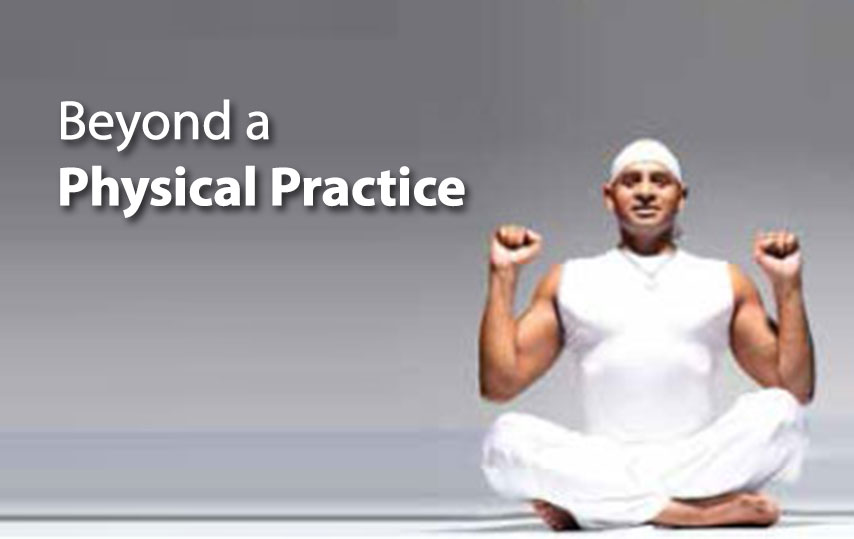Pranayama (Expansion of Life Force Energy)


A. Bastrika (Bellows Breathing)
1. Sit in vajrasana, sukhasana or on a chair with elbows bent and hands in fists at shoulder level (just like getting ready to do a military press for the shoulders).
2. Inhale, raise the arms fully extended overhead and open the fist spreading the fingers.
3. Exhale, lower the arms quickly back to the starting position with the fists clenched.
Perform this movement quickly while maintaining a speed by taking one second to complete one cycle (inhale and exhale) of breath. Always breathe in and castillo hinchable breathe out through the nose. Keep the hands facing forward throughout the entire exercise. Do 3 to 4 sets of 20 breaths each time.
Benefits: This breathing technique clears more carbon dioxide from the lungs than normal breathing and pumps more blood and energy to the brain. It helps to relieve stress, dullness and lethargy and helps to clear the mind, preparing for meditation. Do not perform this exercise before sleep.
 B. Nadi Shodhana Pranayama (Alternate Nostril Breathing)
B. Nadi Shodhana Pranayama (Alternate Nostril Breathing)
1. Sit upright and comfortably either in Sukhasana or on a chair.
2. Close the eyes and begin to relax the whole body. Make sure the back, head and trunk are in one straight line.
3. Bring the right hand in front of the face and use the right thumb to close off the right nostril.
4. Start by exhaling through the left nostril.
5. Then inhale through the left nostril.
6. Close the left nostril with the ring finger of the right hand and exhale through your right nostril.
7. Then inhale through your right nostril.
This is one round. Do 12-15 rounds.
You can perform this breathing in the morning and evening. In the morning, breathe forcefully and with dynamism. This helps to activate your energy and your dynamism. But in the evening, do slowly and gently. This will help to keep your mind tranquil and give you a good night’s sleep.
Benefits: This breathing exercise balances the left and the right hemisphere of the brain. It helps improve balance and co-ordination of the muscle, mind and nerves. It helps sharpen the senses. It helps increase vigor and vitality. It helps to store prana (the vital life force energy) and helps renew your cells. It purifies all the nadis (energy channel).
 C. Bhramari Pranayama (Humming Bee Breathing)
C. Bhramari Pranayama (Humming Bee Breathing)
1. Sit upright and comfortably in vajrasana, Sukhasana, or on a chair.
2. Close the eyes and relax the whole body. Make sure the back, head and trunk are in one straight line.
3. Raise both hands up close to the ears and use the index fingers to plug the ears. If the nails are too long, use the flap of the ears to close the ear holes.
4. With the mouth closed gently, roll the tongue upwards and lightly press the rear of the tongue against the roof of the mouth.
5. Inhale slowly through the nostrils.
6. Exhale slowly while making a deep and steady sound in the throat like a bee humming. Avoid unnecessary tension in the tongue, throat and neck.
Practise 2 to 3 minutes and build up to 5 minutes. Do after Nadi Shodhana Pranayama. This breathing exercise is good to perform at night before sleep
Benefits: This breathing clears the mind inflatable water slide and soothes the nervous system. It also awakens the vishuddha chakra and stimulates the nerve endings in the throat, reducing the occurrence of throat infections.
Yoga is for all ages and body types. If you are considering the use of pranayama for a specific health problem, consult your physician before starting up the practice.
Thirumoolar’s Thirumandiram
Tantra 3 – Attanga (Ashtanga) Yoga Asanam
Okka Adiyinai Yuruvil Yerittu
Mukki Udalai Muzhalgai Thanil Yetrith
Thokka Arinthu Thulanga Thirunthidir
Kukuta Asanang Kollalu Maamae
List the feet on the thighs
Control breath and on elbows raise your body
Thus seated firm and immobile
Thou do reach the Kukudasana

















 Other
Other